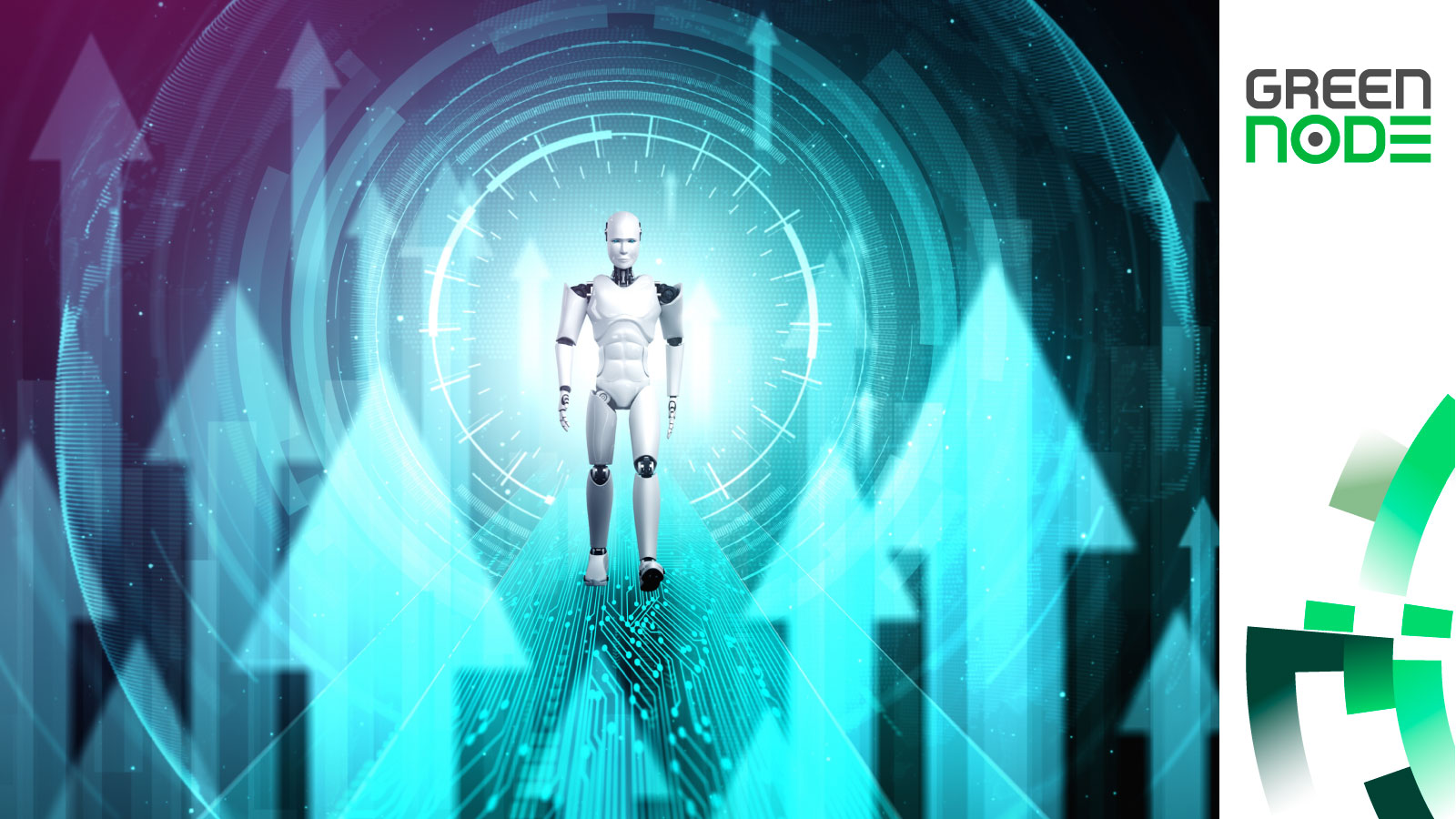In the era of profound progress in deep learning, natural language processing (NLP), and artificial intelligence (AI), we find ourselves on the cusp of a momentous shift. AI agents, surpassing the realms of chatbots and voice assistants, are poised to constitute a substantial segment of the worldwide workforce. This transformative wave is not only reshaping industries but also influencing our everyday experiences. Yet, what does it genuinely entail to inhabit a world enhanced by these "workers"? This blog delves into the intricacies of this evolving landscape, scrutinizing the implications, potential, and challenges that loom on the horizon.
A Quick Overview: The Progression of AI in the Workforce
Before delving into the forthcoming revolution, it's essential to acknowledge the evolutionary path driven by AI that has already unfolded.
- Traditional Computing Systems: The journey commenced with basic computing algorithms, capable of solving pre-defined tasks using a fixed set of rules.
- Chatbots & Early Voice Assistants: As technology progressed, interfaces evolved. Tools such as Siri, Cortana, and early chatbots simplified user-AI interaction but were confined by limited comprehension and capability.
- Neural Networks & Deep Learning: A pivotal turning point was marked by neural networks, mimicking human brain functions and evolving through experience. Deep learning techniques further advanced capabilities, enabling sophisticated image and speech recognition.
- Transformers and Advanced NLP Models: The introduction of transformer architectures sparked a revolution in the NLP landscape. Systems like ChatGPT by OpenAI, BERT, and T5 have led to breakthroughs in human-AI communication. With their profound grasp of language and context, these models can engage in meaningful conversations, generate content, and respond to complex questions with unprecedented accuracy.
Introduce the AI Agent: More Than Just a Conversation
Today's AI landscape hints at a scope beyond conversation tools. AI agents, surpassing mere chat functions, can now execute tasks, learn from their surroundings, make decisions, and even showcase creativity. They go beyond answering questions; they are problem solvers.
Traditional software models followed a straightforward pathway, where stakeholders communicated goals to software managers, who then crafted specific plans. Engineers implemented these plans through lines of code, involving numerous human interventions in this 'legacy paradigm' of software functionality.
AI agents, on the other hand, operate differently. An agent:
- Has goals it aims to achieve.
- Can interact with its environment.
- Formulates a plan based on observations to attain its goal.
- Takes necessary actions, adjusting its approach based on the changing state of the environment.
What sets AI agents apart from traditional models is their capacity to autonomously devise a step-by-step plan to achieve a goal. Essentially, while programmers provided the plan in the past, today's AI agents chart their course.
Consider an everyday example. In traditional software design, a program would alert users about overdue tasks based on predetermined conditions set by developers, following specifications from the product manager.
In the AI agent paradigm, the agent determines when and how to notify the user by assessing the environment (user's habits, application state) and deciding the best course of action. This process becomes more dynamic and in the moment.
ChatGPT departed from its traditional use by integrating plugins, allowing it to leverage external tools for multiple requests. It became an early manifestation of the agent concept. For instance, when a user asked about New York City's weather, ChatGPT, using plugins, could interact with an external weather API, interpret the data, and adjust its responses accordingly.
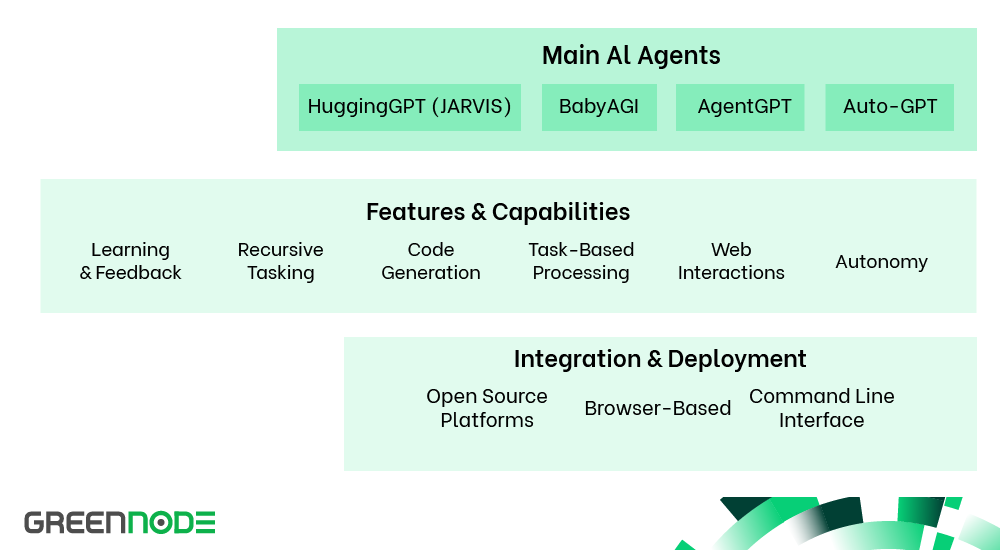
AI agents like Auto-GPT, AgentGPT, and BabyAGI are ushering in a new era in the expansive AI universe. While ChatGPT popularized Generative AI with human input, the vision behind AI agents is to enable AIs to function independently, progressing towards objectives with minimal human interference. This transformative potential is highlighted by Auto-GPT's remarkable rise, amassing over 107,000 stars on GitHub within just six weeks of its launch, a growth unprecedented compared to established projects like the data science package 'pandas'.
AI Agents vs. ChatGPT
Several cutting-edge AI agents, including Auto-GPT and BabyAGI, employ the GPT architecture with the primary goal of reducing reliance on human intervention in completing AI tasks. Phrases such as "GPT on a loop" aptly describe how models like AgentGPT and BabyAGI operate in iterative cycles to enhance their understanding of user requests and fine-tune their outputs. In the meantime, Auto-GPT takes innovation to the next level by integrating internet access and code execution capabilities, thereby significantly expanding its reach in problem-solving.
Innovations in AI Agents
- Extended Memory: Conventional Long-term Language Models (LLMs) grapple with limited memory, preserving only recent interaction segments. For more extensive tasks, the ability to recall entire conversations or even past ones becomes crucial. To address this, AI agents have embraced embedding workflows, transforming textual conversations into numeric arrays as a solution to memory constraints.
- Web-browsing Capabilities: Equipped with browsing features, Auto-GPT can stay abreast of recent events through the utilization of the Google Search API. This addition has sparked debates within the AI community concerning the breadth of an AI's knowledge.
- Code Execution: Going beyond code generation, Auto-GPT possesses the capability to execute both shell and Python codes. This unprecedented functionality enables it to interact with other software, significantly expanding its operational capabilities.
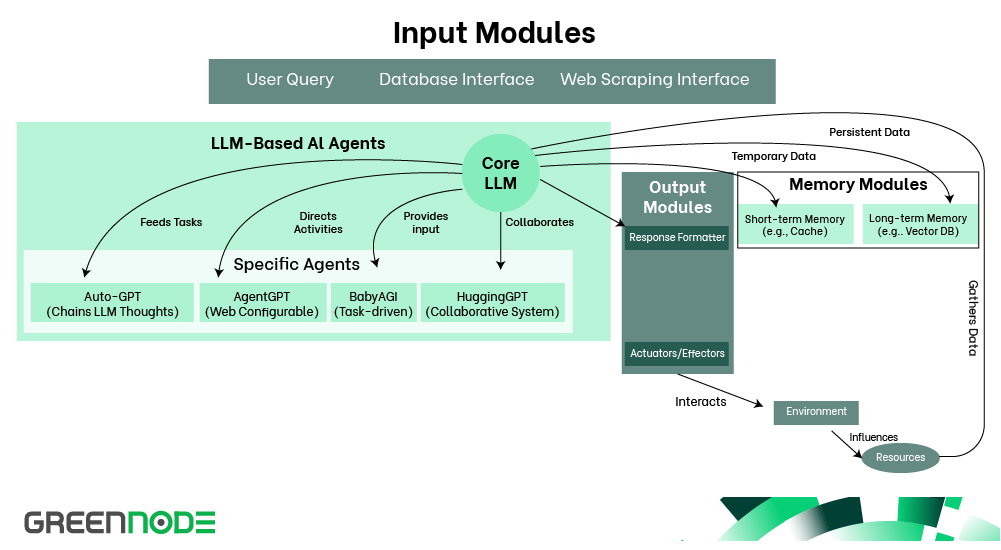
The diagram illustrates the structure of an AI system driven by a Large Language Model (LLM) and specialized agents.
- Inputs: Diverse data streams, including direct user commands, structured databases, web content, and real-time environmental sensors, contribute to the system's input.
- LLM & Agents: At the system's core, the LLM processes these inputs in collaboration with specialized agents such as Auto-GPT for thought chaining, AgentGPT for web-specific tasks, BabyAGI for task-specific actions, and HuggingGPT for team-based processing.
- Outputs: Processed information is converted into a user-friendly format before being transmitted to devices capable of influencing external surroundings or taking actions based on the data.
- Memory Components: Information is retained on both a temporary and permanent basis, utilizing short-term caches and long-term databases.
- Environment: The external realm, which impacts the system's sensors and is influenced by the system's actions, is referred to as the environment.
Advanced AI Agents: Auto-GPT, BabyAGI and Deepnote AI Copilot
AutoGPT and AgentGPT
AutoGPT, unveiled on GitHub in March 2023, is a clever Python-based application that leverages the capabilities of GPT, OpenAI's transformative generative model. What sets Auto-GPT apart from its predecessors is its autonomy; it's crafted to handle tasks with minimal human intervention and possesses the unique ability to initiate prompts on its own. Users simply outline a broad objective, and Auto-GPT generates the necessary prompts to achieve that goal, marking a potential revolutionary stride towards genuine artificial general intelligence (AGI).
With features encompassing internet connectivity, memory management, and file storage capabilities using GPT-3.5, this tool adeptly manages a wide array of tasks, from conventional ones like email composition to intricate tasks that would typically demand significant human involvement.
In contrast, AgentGPT, also built on the GPT framework, serves as a user-friendly interface that doesn't necessitate extensive coding expertise for setup and usage. AgentGPT allows users to define AI goals, breaking them down into manageable tasks.
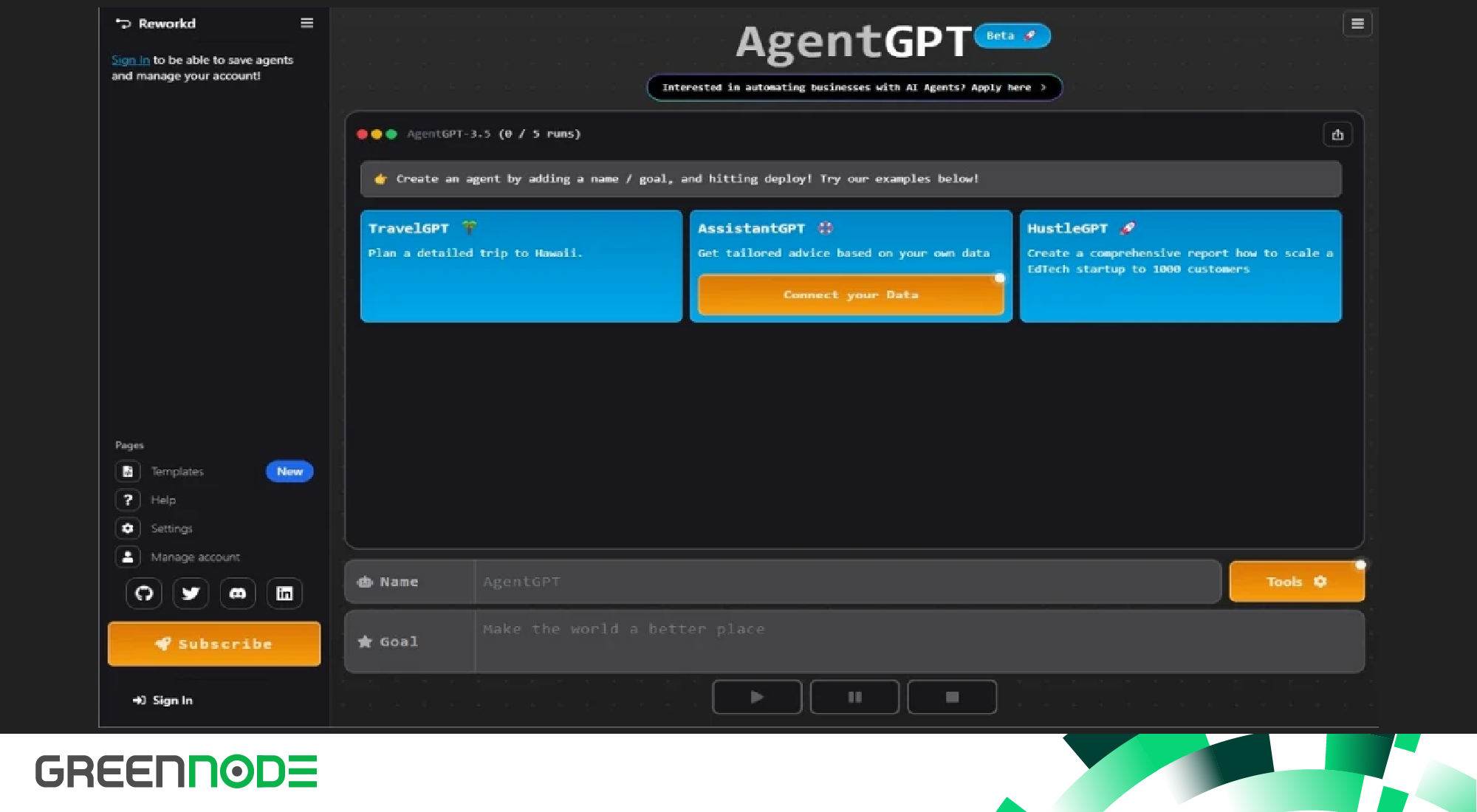
Moreover, AgentGPT stands out for its versatility, extending beyond the creation of chatbots to diverse applications such as Discord bots and seamless integration with Auto-GPT. This ensures that individuals without an extensive coding background can perform tasks like fully autonomous coding, text generation, language translation, and problem-solving.
LangChain, a framework that bridges LLMs with various tools, utilizes agents often referred to as 'Bots' to identify and execute specific tasks by selecting the appropriate tool. These agents seamlessly integrate with external resources, while a vector database in LangChain stores unstructured data, enabling swift information retrieval for LLMs.
BabyAGI
Next, we have BabyAGI, a streamlined yet potent agent. To grasp BabyAGI's capabilities, envision a digital project manager that independently conceives, organizes, and executes tasks with a precise focus on given objectives. While most AI-driven platforms are confined by their pre-trained knowledge, BabyAGI distinguishes itself with the ability to adapt and learn from experiences. It possesses a profound capacity to interpret feedback and, akin to humans, base decisions on trial and error.
Noteworthy is not only BabyAGI's adaptability but also its proficiency in running code for specific objectives. It excels in intricate domains like cryptocurrency trading, robotics, and autonomous driving, positioning itself as a versatile tool across a myriad of applications.
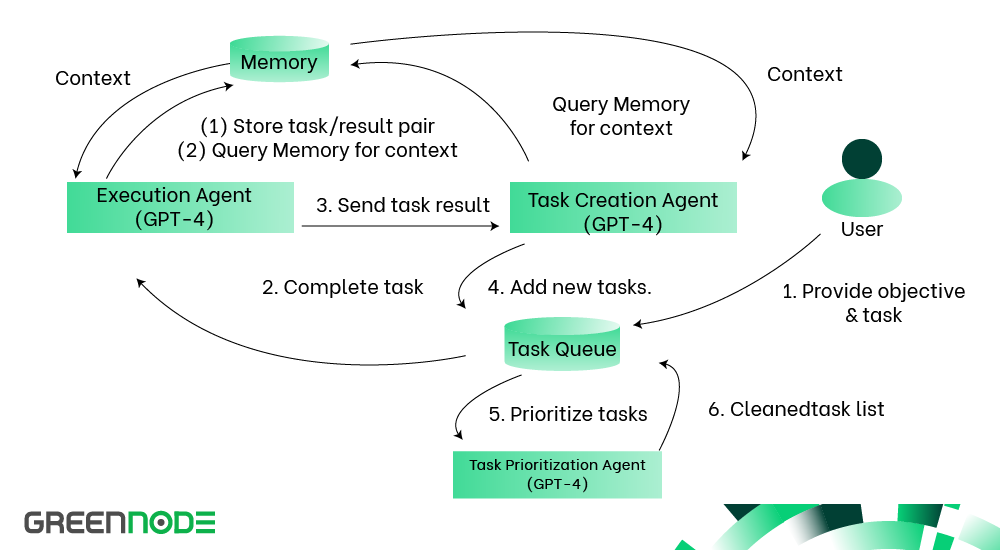
The process can be divided into 3 agents:
- Execution Agent: At the core of the system, this agent utilizes OpenAI’s API for task processing. Given an objective and a task, it prompts OpenAI's API and retrieves task outcomes.
- Task Creation Agent: This function generates new tasks based on earlier results and current objectives. A prompt is sent to OpenAI’s API, which then returns potential tasks organized as a list of dictionaries.
- Task Prioritization Agent: In the final phase, tasks are sequenced based on priority. This agent employs OpenAI’s API to re-order tasks, ensuring that the most critical ones are executed first.
In conjunction with OpenAI's language model, BabyAGI makes use of Pinecone for context-centric task result storage and retrieval.
To commence, a valid OpenAPI key is required. For accessibility, the UI features a settings section where the OpenAPI key can be entered. Additionally, for cost management, it's advisable to set a limit on the number of iterations.
After configuring the application, I conducted a small experiment. I submitted a prompt to BabyAGI: “Craft a concise tweet thread focusing on the journey of personal growth, touching on milestones, challenges, and the transformative power of continuous learning”.
BabyAGI responded with a well-thought-out plan. It wasn't a generic template but a comprehensive roadmap, indicating that the underlying AI had indeed grasped the nuances of the request.
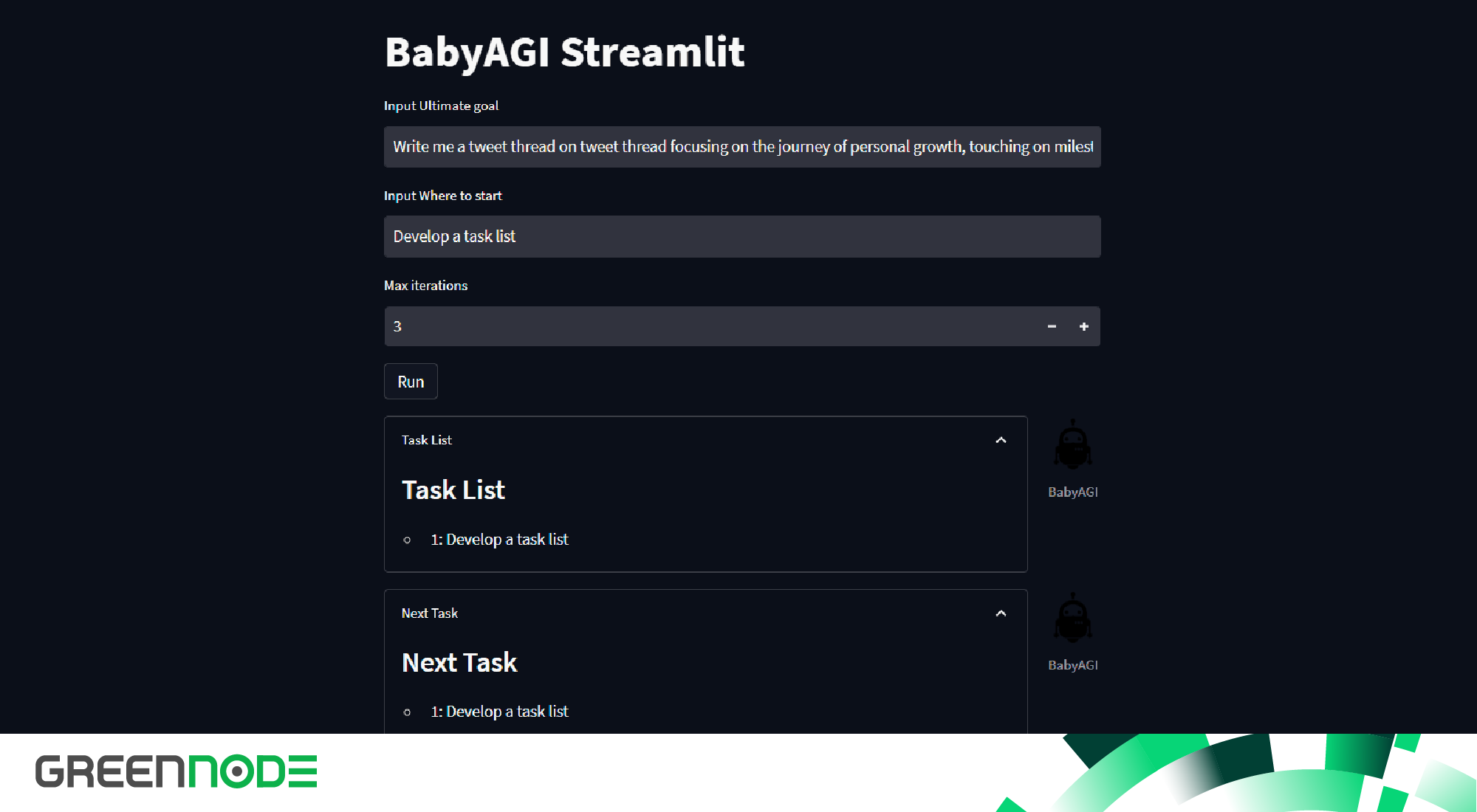
Deepnote AI Copilot
Deepnote AI Copilot transforms the landscape of data exploration within notebooks. What sets it apart?
At its essence, Deepnote AI is designed to enhance the workflow of data scientists. Upon receiving a basic instruction, the AI immediately engages, formulating strategies, executing SQL queries, visualizing data using Python, and articulately presenting its findings.
A key strength of Deepnote AI lies in its comprehensive understanding of your workspace. It seamlessly aligns its execution plans with the organizational context by grasping integration schemas and file systems, ensuring that its insights remain consistently relevant.
The AI's integration with notebook platforms establishes a distinctive feedback loop. It actively evaluates code outputs, allowing it to adeptly self-correct and ensure that results align with the defined objectives.
What distinguishes Deepnote AI is its transparent operations, offering clear insights into its processes. The seamless integration of code and outputs ensures that its actions are always accountable and reproducible.
Final Thoughts
AI agents possess remarkable versatility, influencing industries, reshaping workflows, and accomplishing tasks that were once deemed impossible. However, akin to all groundbreaking innovations, they are not devoid of imperfections.
Despite their capacity to redefine the essence of our digital existence, these agents encounter specific challenges. Some of these challenges mirror inherent human difficulties, such as comprehending context in nuanced scenarios or addressing issues that extend beyond their trained datasets.
From infrastructure to platform, GreenNode caters to all your enterprise AI needs, bridging the gap between businesses and the transformative capabilities of artificial intelligence. Our platform, powered by the unparalleled performance of NVIDIA, propels enterprises into the AI mainstream, ensuring uncompromising efficiency.
